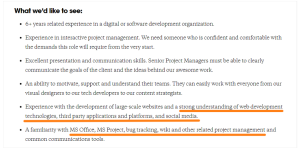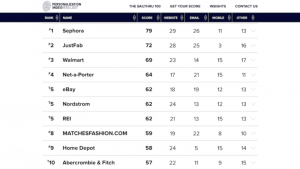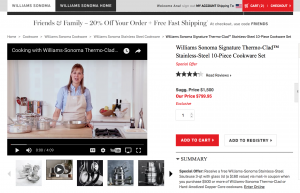
Are you on Pinterest? The question gets asked more often than it did when Pinterest was just starting out, and more people respond to the question with a big YES. As of 2013, Pinterest has over 70 million users and rivals the other social networks. Pins have longer half-lives than other social media posts which means something you pinned a month ago can suddenly go viral as if you pinned it (July 19, 2015).
However, pinning the successful pins that go viral is not the most easy thing to do. Many people use Pinterest, but not as many stand out on the platform. Getting your pins to spread, and for you to ultimately become successful on Pinterest, you must know how to effectively pin. Here are 10 steps to better pinning:
#1: Schedule Pins
Scheduling your pins in advance allows you to account for all of the timezones of the world. At midnight where you live, people are waking up, eating breakfast, and checking their Pinterest accounts for new pins in some other part of the world.
Scheduling pins in advance also helps brand awareness. When you schedule pins throughout the day, and people see your pins often, they will remember you. As more people remember you and see you more often, they will look at your profile each time they go on Pinterest. These types of followers are the ones who will share your content, subscribe to your blog, and possibly buy your products.
#2: Pin Consistently
Scheduling a few pins here and there only does so good. In order to get the long-term growth associated with scheduling pins, you must schedule pins at a consistent rate. On ViralWoot, you can schedule 100 pins per month for free. By just scheduling three pins every day, you can schedule pins for free, and you get to maintain your consistency.
Pinning at consistent times throughout the day will let your followers know when to expect something new from you. If someone always pins at 2 pm every day, that person’s followers can expect a new pin at 2 pm. This expectation will lead to more people directly viewing your profile, going through your boards, locating the new pin, and then going through some of your older pins.
#3: Bright, Longer Pictures
On Pinterest, the pictures that spread are the tall, bright colored pictures. When you create a picture on Canva or KeyNote, increase the height of the picture. Increasing the height of a picture makes it more noticeable on someone’s home feed because the picture will take up an entire section. You want a picture to take up a lot of space because pictures that take up a lot of space get attention. If the picture is made to spread, all of the attention the picture gets will lead to numerous repins, and that picture may possibly go viral.
#4: Infographics
Infographics are very successful on the web, and on a social network that requires pictures for each post, infographics dominate. Not only do infographics typically perform very well, but many of them are the bright, long pictures that you would want to pin on Pinterest for more exposure. Infographics allow people to learn new things in the most effective manner possible. Why are infographics so effective? The human mind can register an image 60,000 times faster than plain text.
#5: Have A Variety Of Boards
On Pinterest, you must keep your professionalism, but also let people know about you outside of the business. You never want to only have a group of boards that only focus on one basic niche. I have plenty of social media boards, but I also have boards about 3D printing, Legos, and some of my other interests. Some people think I am a 3D printer now, but I just like to see the progress the new technology has made. I envision myself being a 3D printer someday, but not yet.
Having a variety of boards will allow you to learn more about your hobbies, passions, and anything that you wish to know about. If you want to learn more about an animal, create a board based on that animals and pin one fact about that animal every day. If you want to learn how to get stronger abs, pin at least one informative article on that board every day, and only pin one of those articles after you read it from start to finish. Pinterest isn’t just a marketing tool. You can use it to learn new things that you never know about before.
#6: Add More Pins On Each Board
The best analogy of Pinterest that gets used often is referring to Pinterest as an online magazine. Now let’s think about a successful magazine. It has a bunch of interesting stories on several pages. Someone could spend anywhere from 15-30 minutes reading a good magazine. Do you provide that option on Pinterest? Do all of your boards have enough pins that lead to enough articles where someone can spend 15-30 minutes on your board without getting bored or running out of content to read (pun not intentional. I don’t like the way it sounds, but I needed to convey myself in the most clear manner possible)?
The difference between the two is that on a Pinterest board, you can pin thousands of pins on one board. Some people may spend hours on your boards, and if you get people to spend hours of their time on your boards, you can rest assured these people will come back for more. They will remember you and spread the word.
#7: Implement The Secret Board Strategy
It is natural for us to create boards and quickly lose interest in some of the boards that we create. It happens to the best of us. The final outcome is a dull board with under 10 pins that doesn’t keep a visitor’s attention for long. Sure, one solution is to delete the entire board. If you really wanted to, you could move the pins from that board to some of your other boards.
However, why does that problem have to happen in the first place? You can create all of your new boards as secret boards so no one sees them. If you decide you are no longer interested in something after 10 pins, then you can just delete the secret board (or keep it), and your Pinterest profile won’t look any less enchanting than it already looks. Once your secret board reaches 20 pins, make it public. Now when your followers look at your new board, there are options, and you are not pinning dozens of times in a few minutes (which annoys followers). Your followers stick around, engage with your content, repin your content, and come back for more.
#8: Implement The Group Board Strategy
Getting your pins to reach out to more people is as simple as joining a popular group board. There are several group boards with tens of thousands of followers eagerly looking for contributors. If you get an invite from one of these group boards, take the group board creator up on the offer. Now, regardless of whether you have 100 followers or 1,000 followers, you are now a part of a group board that allows you to reach tens of thousands of people.
While you join other people’s group boards, consider turning most your boards into group boards. When you turn one of your boards into a group board and get contributors, your group board will get pins added to it without your direct involvement. Better yet, each time someone visits one of your contributors’ profiles and clicks the “Follow All” button, your group board gets an extra followers too.
#9: Optimized Descriptions
The description of a pin is almost as important as the picture itself. In your pin’s description, you must include hashtags and keywords so it is easy for people to find you on Pinterest’s search engine. In your optimized description should also be a call-to-action where you encourage your followers to do something (i.e. click on the picture to learn how to become a better blogger).
#10: Pin Valuable Content
This may be the most common sense tip of the bunch, but common sense is not always common practice. A valuable pin is one that provides insights or great entertainment directly in the description, the picture itself, and/or the webpage your followers get to see when they click on the picture. Each time you share something on Pinterest, ask yourself how it empowers or entertains the people in your audience. Don’t pin something just for fun. The pin appears on your profile. Only pin something if you believe it is meaningful.
In Conclusion
Pinterest is a growing social network. It may not be as large as Twitter, Instagram, or Facebook quite yet, but Pinterest is getting closer. One thing about the users on Pinterest is that they can spend a massive amount of time on the site. If you create valuable boards and provide your followers with hundreds of pins on some of your boards, those followers will stick around for a long period of time. Many of the repins I get are from repeat repinners. Some people will go through some of my boards with hundreds of pins and pin 25% of my pins. That’s a lot of extra exposure for my account, my brand, my blog, and what I stand for.
So now I ask you whether you have a Pinterest account or not? Do you see potential for Pinterest in your strategy? Is Pinterest already a big part of your strategy? Please share your thoughts and advice below.
(201)
Report Post






